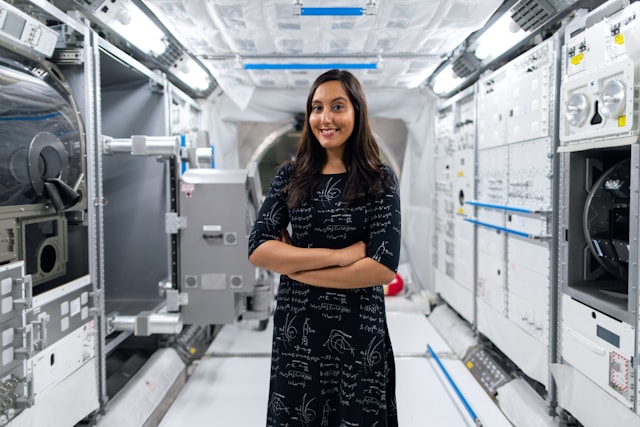Promoting Gender Equality in Aerospace Recruitment: A Recruiter's Roadmap.
- The First Step - Recognising That A Problem Exists
- How to De-bias the Recruitment System
- Advocating for Career Advancement
- Addressing Online Harassment

In the realm of aerospace recruitment, developing frameworks for gender equality is critically important in relation to driving excellence and therein innovation within the sector. An academic study1 has found that the shadow of gender biases within the wider sector looms large, and this is especially relevant within the recruitment process. In this article, we will explore holistic pathways in which recruiters can meet these challenges head-on and foster inclusive cultures within the framework of recruitment experiences. Let’s explore in detail, ways in which we, as recruiters, can address these gender disparities and champion diversity within the aerospace sector.
The First Step – Recognising That A Problem Exists
A recent literature review found that men experience a 6% net positive increase in interview shortlisting in all sectors over women. In STEM fields, this increases to 44%2. The problem is therefore structural. It means that this goes beyond a mere ‘presence’ of bias within the hiring process. According to UNESCO3, this is further entrenched by data bias within AI algorithms that use large language models which are dependent upon historical data with a preference built in for male candidacies over female. Within the space sector, globally, women with the qualifications and proven track records of delivering expertise, are finding digital and structural barriers impeding their progress. This problem therefore exists and is a profound problem that is impacting organisational talent acquisition and as such it requires a solution.
How to De-bias the Recruitment System
How can we devise frameworks that help to remove barriers that promote bias within the recruitment process? One element is for recruitment professionals to purposefully explore their own recruitment systems and identify potential systems, patterns, and processes that could directly or indirectly create biassed outcomes. This means critically evaluating templates and content around job descriptions, personal specifications, and other key documentation in order to ensure that they appeal to a broader, more diverse, pool of candidates. This perhaps means continuous professional development training on bias and allyship within the workplace. Developing tools that help craft job adverts which place inclusivity at the very heart of content creation. This means understanding how gendered language itself can act as a barrier to gender equality – how emotive language over technical can help balance the playing field in favour of female candidates. This can be accomplished by utilising AI-driven tools that can monitor and therein flag up biassed language within job advert/posting creation stages of the employment lifecycle.
Advocating for Career Advancement
Recruitment is a fast-paced career. Anyone in recruitment understands that targets and client development is a central tenet of the trade. However, if recruiters are serious about gender equality – and want to go beyond paying mere lip service – then advocating for gender equality needs to be a central part of the process. This means when identifying possible candidates, recruiters will need to advocate for female candidates in ways they do not have to advocate for male candidates. One example, if an AI platform matches female candidates to roles with predominantly soft skills over technical expertise (even if they have that technical expertise) this showcases digital AI-led bias. Advocacy means telling clients that whilst digital AI platforms are highlighting male candidates, that any in-build bias should be similarly highlighted to the employer so that they have the full information on why one candidate is viewed as a better match over another – especially when the gender gap is that definitive.
Addressing Online Harassment
Online harassment might sound like an issue that is divorced from recruitment. However, in reality, with today’s hyper digital landscape, online harassment is a major barrier to entry in the wider space/aerospace sector – especially in the context of digital discrimination in online environments (like social media). By utilising digital tools, recruiters can implement systems that can protect their recruitment processes from direct or indirect brand damaging harm. By implementing frameworks and processes within your digital systems that detect and therein flag offensive/discriminatory messages and/or behaviour, you can help create a safer space for female participation in your candidate online spaces.
In conclusion, recruitment practitioners can play a pivotal role in promoting positive gender equality in the space/aerospace sector. This can be done, as highlighted above, through a range of behavioural change, cultural change, and implementing technological solutions that can drive real impactful change – change that can really help create a brighter sector that understands that talent has no gender boundaries.
External Links:
1. National Library of Medicine: Gender equity in hiring: examining the effectiveness of a personality-based algorithm
2. Harvard Business Review: Research: To Reduce Gender Bias in Hiring, Make Your Shortlist Longer
3. CIO: UNESCO finds ‘pervasive’ gender bias in generative AI tools












